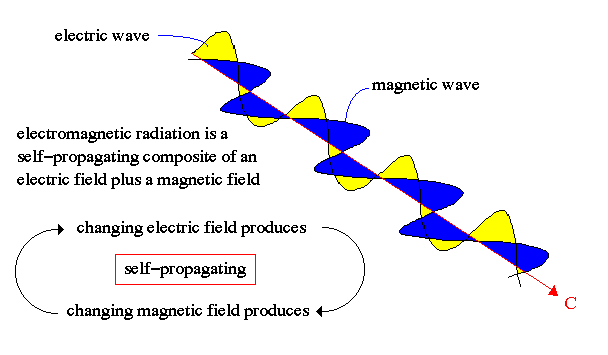
|
Electromagnetic Radiation:
| Readings: Schneider & Arny: Unit 21, 22, 25, 30 |
| (Audio Lecture) |
Maxwell showed in the mid-1800's that light is energy carried in the form of opposite but supporting electric and magnetic fields in the shape of waves, i.e. self-propagating electromagnetic waves or electromagnetic radiation.

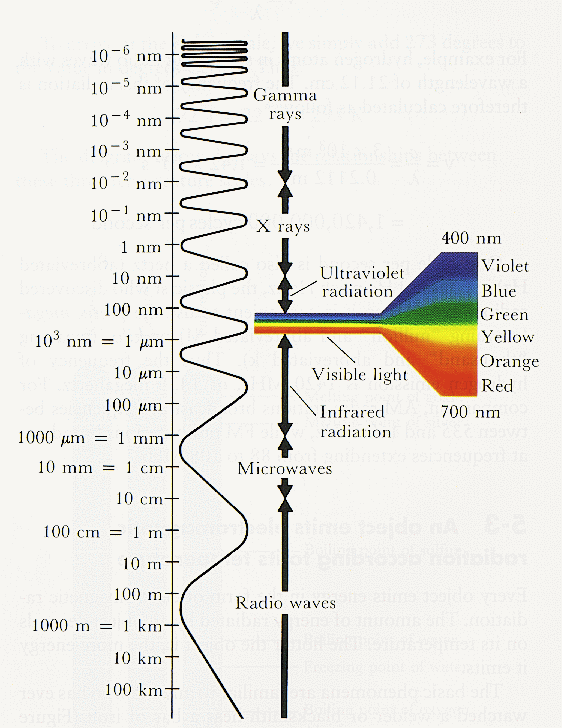
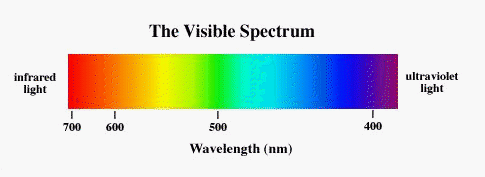
Optics:
Due to its wave-like nature, light has three properties when encountering, or passing through, a medium:
1) reflection
2) refraction
3) diffraction
When a light ray strikes a medium, such as oil or water, the ray is both refracted and reflected as shown below:
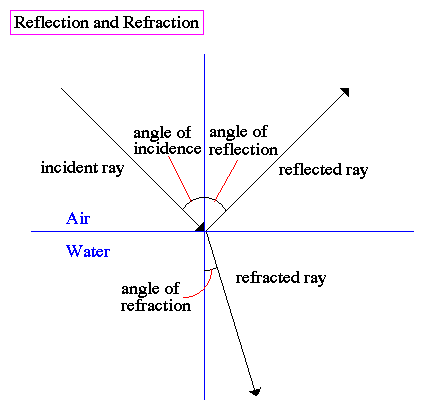

Diffraction is the constructive and destructive interference of two beams of light that results in a wave-like pattern. When two peaks of a wave intersect they combine to make a bigger wave. When a peak and a trough intersect, they cancel.
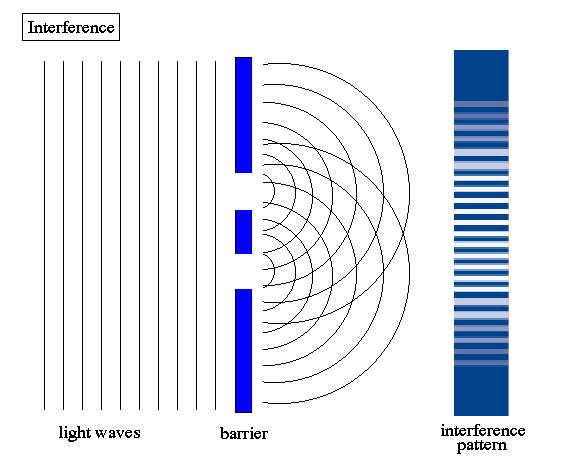
Inverse Square Law:
The brightness of an object varies inversely as the square of the distance. This means that objects farther away are dimmer.
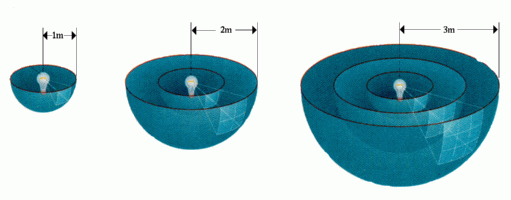

But notice that the dimming does not progress in a linear fashion (i.e. 1, 2, 3, 4 ...) but rather in an inverse square (i.e. 1/2, 1/4, 1/8, 1/16 ...).
Doppler effect:
The Doppler effect occurs when an object that is emitting light is in motion with respect to the observer. If the object is moving towards the observer the light is ``compressed'', meaning that the wavelength of the light becomes smaller. Smaller wavelength means bluer light, so we say the object is blueshifted. If the object is moving away from the observer the light is ``expanded'', the wavelength is increased or redshifted.
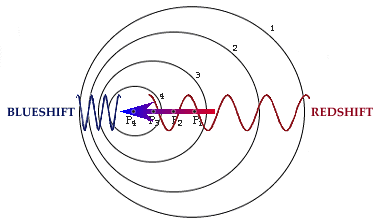
Notice that the speed of light does not change, only the wavelength. It is a basic premise of the theory of relativity that the velocity of light never changes regardless of the motion of the observer.
Electromagnetic radiation is expressed in either wavelength, λ in centimeters, or frequency, ν in Hertz (sec-1). The relationship between wavelength and frequency is
where c is the speed of light, 3x1010 cm/sec.
The Doppler effect relates a change in wavelength, Δλ, to the original wavelength, λ, and the velocity of the source, v, such that
For example, the change in wavelength for a 50 cm radio wave from a car moving at 3000 cm/sec (about 45 mph) is
Δλ = 5x10-6 cm
a very small change.
Observational Astronomy:
Astronomy is a passive science, but observing phenomenon at different wavelengths has several advantages to overcome the lack of making experiments. There are different physics at different wavelengths, for example, high energy magnetic fields are seen in the x-ray, radiation from heat is seen in the infrared.


|
|

|